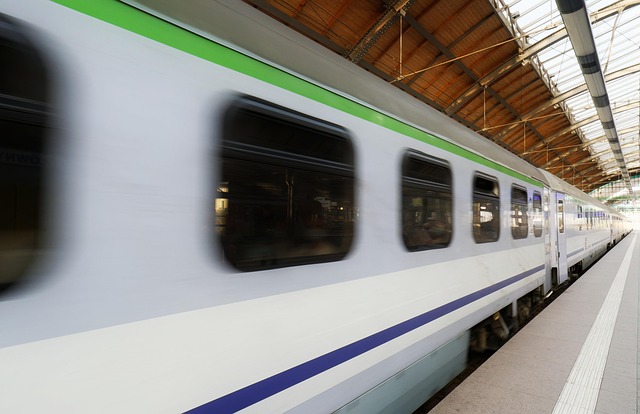Optimizing Multimodal Connections Between Cities
Efficient multimodal connections between cities reduce travel time, lower costs, and improve passenger experience by linking trains, buses, aviation, rideshare, and micro-mobility options. This article outlines practical steps to plan itineraries, manage baggage and visas, coordinate logistics and navigation across modes, and incorporate sustainability goals to make intercity travel more resilient and user-friendly.

Efficient multimodal connections are about more than scheduling—successful journeys depend on coordination across operators, clear navigation, and contingency planning. Whether you are a planner designing regional links or a traveler moving between cities, understanding itinerary design, mobility options, logistics coordination, visa and documentation needs, packing strategies, and sustainable choices improves reliability and comfort. This article breaks down practical tactics for each area, with a focus on actionable steps that work across different transport ecosystems.
How should I plan an itinerary for multimodal trips?
A strong itinerary starts with mapping door-to-door time rather than single-leg durations. Identify realistic transfer windows between trains, buses, flights, and rideshares, accounting for ticket types, check-in times, and potential delays. Prioritize connections with integrated ticketing or guaranteed transfers when available. Use layered planning: a primary route plus one or two resilient alternatives that avoid tight single points of failure. Factor in local commuting options at origin and destination to ensure first- and last-mile coverage. Keep critical contact and booking information accessible in both digital and offline formats.
What mobility options should I consider in cities?
Assess available mobility modes—regional rail, intercity buses, short-haul flights, rideshare, taxis, and micromobility—to match speed, cost, and passenger needs. High-capacity rail often excels for predictable city-to-city travel, while buses provide broader geographic coverage. Rideshare and taxis bridge mismatched schedules or remote stations. Consider service frequency, peak congestion patterns, and interface quality (station accessibility, signage, and luggage facilities). For passengers with reduced mobility or heavy baggage, prioritize services with step-free access and clear staff assistance procedures.
How can logistics support smooth transfers?
Logistics coordination underpins reliable multimodal journeys. Share real-time operational data between operators—delays, platform changes, and capacity updates—so system managers and booking platforms can rebook or route passengers proactively. Physical infrastructure matters: timed interchanges, covered walkways, consolidated baggage handling, and coordinated customer service desks reduce friction. For freight or combined passenger-and-cargo needs, define standardized handover points and liability rules. Establish escalation paths for disruptions and explore interoperable ticketing and revenue-settlement mechanisms to simplify transfers for travelers.
What visa and documentation issues affect intercity travel?
When crossing international borders or transiting through different jurisdictions, visas and travel documents can be decisive. Confirm entry, transit, and visa-on-arrival rules well before travel and plan buffer time for border control. Some multimodal itineraries mix flight segments with land borders—understand whether baggage is checked through and if passengers must reclaim luggage to pass immigration. Keep digital copies of passports and travel permits, and register for any e-gates or pre-clearance where available. For complex routes, consult official government sources or accredited visa services to prevent last-minute denial.
How should I manage packing and baggage for multimodal trips?
Pack with transfers in mind: use luggage that is manageable across stairs and through crowded interchanges. Prioritize carry items for a single-day disruption—chargers, basic toiletries, essential documents, and a change of clothes. Use distinctive tags and consider lightweight, wheeled luggage that fits train and bus storage constraints. If linking air travel with ground modes, verify size and weight allowances for each leg and whether luggage can be checked through between carriers. For longer or multi-leg itineraries, consolidate items in modular packing cubes to ease quick transfers and reduce handling time.
How can sustainability be integrated into multimodal planning?
Sustainability choices include prioritizing low-emission modes (regional rail over short-haul flights), optimizing load factors, and encouraging shared mobility for first/last mile segments. Design timetables to reduce empty returns and promote integrated fare structures that make greener options economically attractive. Encourage modal shift through improved passenger information, secure bike storage at interchanges, and incentives for off-peak travel. Monitor key performance metrics—emissions per passenger-kilometer, occupancy rates, and modal split—to guide continuous improvements and present transparent sustainability reporting to stakeholders.
Efficient multimodal connections require both strategic planning and operational detail. By designing resilient itineraries, evaluating local mobility offerings, coordinating logistics, preparing documentation and baggage, and embedding sustainability measures, planners and travelers can improve reliability and user experience across cities. Continuous data sharing and clear passenger information remain central to reducing friction and enabling smoother, more predictable intercity journeys.





